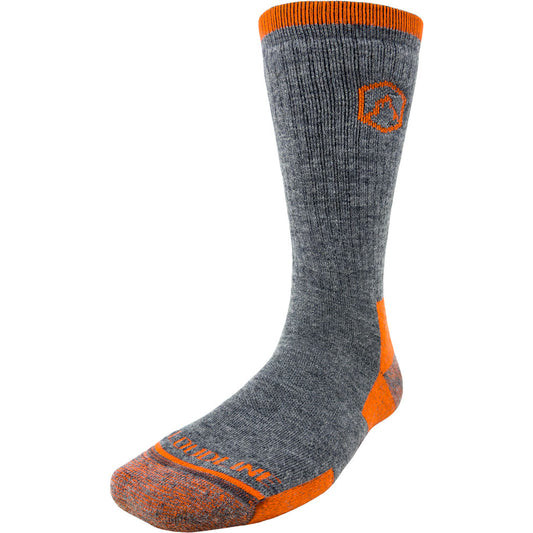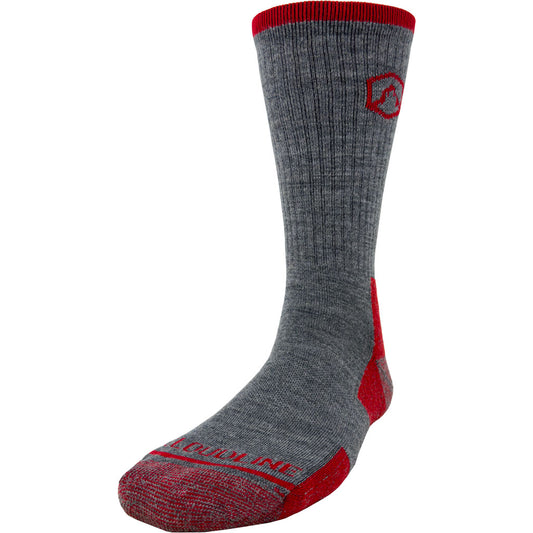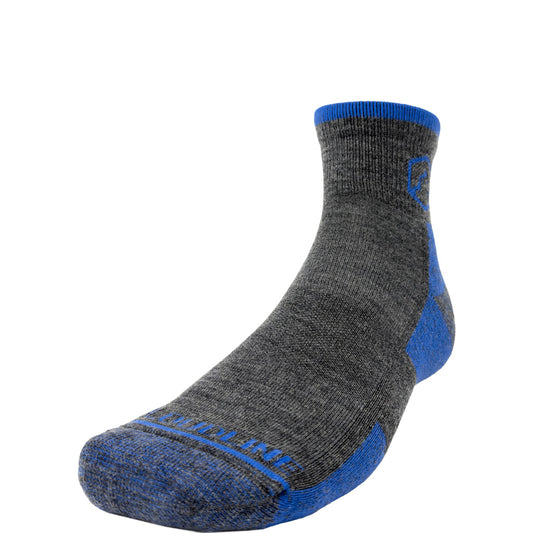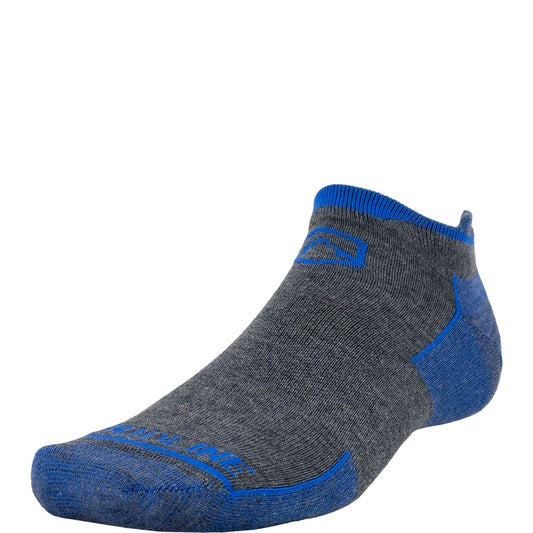
A Hiker's Ultimate Guide to Fall: How to Enjoy the Trails and Stay Safe This Season
Of all the seasonal transitions, fall’s arrival can creep by unnoticed. Suddenly, the days are shorter, the leaves begin to change, and the magic of autumn is in the air. After an active summer full of outdoor adventures, fall arrives without warning, prompting us to reach for puffy jackets and steaming thermoses of chai tea.

But don’t make the mistake of putting your hiking boots away just yet. With crisp days, spectacular foliage, and quieter trails, fall is arguably the best time for a hike. And while fall beckons with all its charms, it takes a little extra preparation to enjoy a hike during the shoulder season. Read on to learn how to pick the best fall hike, pack for unpredictable weather, and arm yourself for whatever the season throws your way.
What to Wear When Hiking in the Fall

Dressing for fall hiking isn’t too different from dressing for other seasons. The basic rules still apply - you’ve just got to be prepared for a wider range of conditions.
As always, dress in layers. Fall temperatures can change dramatically throughout the day, and you need to be prepared for it all. A short-sleeved, moisture-wicking baselayer is a great place to start. Short sleeves are convenient when the sun comes out, and a quick-drying, wicking layer keeps you dry even if you sweat.
An insulative, long-sleeve midlayer is a must for fall hiking. You never know when the wind will pick up or the temperature will drop. Depending on where you’re hiking, a down or synthetic puffy jacket can be a lifesaver when “crisp” weather becomes downright cold.
Don’t skimp on waterproof layers! Rain or snow can fall unexpectedly this time of year, and with chilly temperatures, you don’t want to be caught soaked in the cold. Make sure your layers are fully water proof, not just water resistant.
Some hikers swear by lightweight trail shoes, but consider the conditions before deciding against your boots. Rain and snow can quickly lead to wet feet, meaning cold toes, blisters, and the end of a fun hike. Waterproof hiking boots keep your feet dry when the rain starts to fall or the snow piles up.
And speaking of feet, socks matter. Pick a pair of merino wool hiking socks so you can be sure they’ll dry quickly if they do get wet. If you’re worried about chilly toes, medium cushion socks are a cozy-yet-breathable option.
And finally, if you’re hiking at high elevations, in colder climates, or late in the season, be sure to throw a warm hat, gloves, and extra socks in your bag.
What to Pack for Fall Hiking

Now that you’re dressed, it’s time to pack your bag with fall hiking essentials. While the basics are the same for a hike any time of the year, the fall season requires a few extra items to keep you warm, fed, and safe:
- Hot tea - When your layers aren’t doing the trick, sipping a hot drink might be just what you need to help you warm up from the inside out.
- Extra snacks - Eating warms you up, and you’ll be burning more calories when the mercury starts to drop. Bring convenient, filling trail snacks that you can eat on the go.
- Headlamp - You know fall’s here when the nights get longer. You won’t have as many daylight hours on the trail, so plan ahead and make sure you’ve got a headlamp in case you’re out after dark.
- Extra batteries and charger - With darker evenings and earlier nights, having a working flashlight is crucial. Bring backup batteries for your headlamp, and a portable charger for when the cold drains your phone.
- Blaze orange clothing - If you hike anywhere in or near a hunting zone, wear blaze orange or brightly colored clothing to make yourself seen.
Depending on your location and how late into the season you’re hiking, you might want to consider this extra equipment:
- Gaiters - Gaiters come in handy when you’re hiking through snow or mud, keeping your shoes, socks, and feet dry.
- Micro-spikes - If you’re hiking in icy, snowy conditions (or it’s possible you will be), a pair of micro-spikes can give you some much-needed traction.
- Trekking poles - They’re never a bad idea when you’re hiking over uneven, snowy, or wet terrain.
Helpful Tips for Fall Hiking

Part of preparing for a fall hike is knowing what to expect (and knowing what you can’t expect) before heading out on the trail. Weather, hunting, and wildlife are all seasonal hazards, so here are our tips for dealing with each:
Weather: Hiking in the fall is a fantastic way to enjoy this beautiful season. But if you spend enough time outside, you know that you can’t count on the weather to adhere to your plans. This is especially true in the fall, when a warm, sunny day can follow a cold and snowy one. Check the forecast before heading out, but be prepared for everything to change.
If you’re hiking in the mountains, where weather is hard to predict, check out Mountain Weather. Here, you can find specialized forecasts for mountain states across the U.S.
Hunting: While fall is a favorite time for hiking, it’s also a favorite time for hunting. Whether or not you’re a hunter, it’s important to know about hunting rules and regulations if you’re hiking through or near hunting zones. Educating yourself about hunting seasons in your area is the best thing you can do to safely share the outdoors. Check out your state’s Game and Fish, Department of Natural Resources, or similar agency’s website to learn about specific regulations in your area.
And as we mentioned above, if you know you’ll be hiking in or near a hunting zone, wear a blaze orange vest, hat, or jacket. It’s never a bad idea to make yourself seen when you’re hiking - especially during hunting season.
Wildlife: Depending on where you live, wildlife activity is another important consideration for fall hiking. Bears, for example, are more active during this time of the year as they put on extra weight for the winter. During the fall, elk and moose are in the middle of the rut, or mating season, and are more aggressive than normal.
Know what to do if you encounter wildlife on the trail, especially if you know they’re more active this time of year.
How to Choose the Best Fall Hikes

Fall can transform familiar trails into magical, colorful adventures. But prepping for a fall hike involves balancing amazing autumn foliage with the potential for inclement trail conditions. As an outdoor enthusiast, you know the importance of doing your research, and choosing a trail to hike in the fall is no exception to this advice.
Trail conditions: As fall transitions to winter, trail conditions become even more important. A recent snowfall can make an otherwise easy section of trail totally impassable. Ask local guides or rangers, or check trail forums before choosing a hike on a potentially treacherous trail. All Trails and Hiking Project are helpful sites to find recent trail reports from fellow hikers.
Keep in mind the extra considerations this time of year when picking a trail - like road conditions and closures. Many national parks and forests have seasonal roads that close even before the snow starts to fall.
Foliage: Witnessing the gold shimmer of an aspen or the striking red of a maple is one of the best things about fall hiking. Seeing an entire mountainside exploding in autumn color can transform a hike, so plan some outings around these beautiful, changing leaves.
Check trail guides and blogs in your local area to find the best hikes for leaf-peeping. In general, plan to get out on the trail when your area hits peak color - depending on where you are, that could be anywhere from late September to mid-November. Use a fall foliage prediction map to help you pinpoint the best time to see fall colors wherever you’re hiking.
Hit the Trail!
With the right preparation, you might find you enjoy hiking in fall more than any other season. The crisp air, gorgeous leaves, and deserted trails make this a truly special time to enjoy the outdoors. So pack well, plan thoroughly, and get outside this season!
If you find these tips helpful, sign up for our emails to get more from the Cloudline Blog delivered straight to your inbox.




